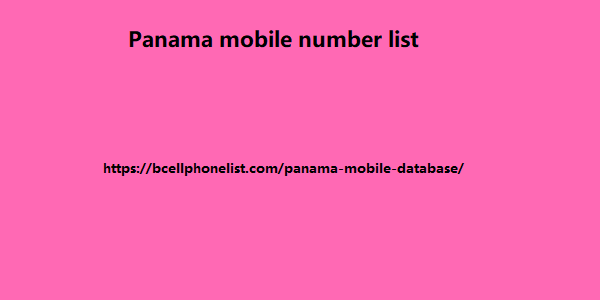Post by yamanhosen5657 on Mar 8, 2024 23:48:35 GMT -5
In order to count the number of ingredients in each recipe, I'll use the COUNT formula. The COUNT formula essentially checks to see if the cells in a range are empty or not and returns the total that are filled. This formula will be set up in my spreadsheet the same way as my SUM row. Watch a tutorial here. According to my spreadsheet, cereal is the least complicated breakfast, but I'm still not convinced that an easy breakfast is worth it.
What if it costs too much? What if the extra effort of cooking another meal saves me money? Now, I'm going to refine my decision by figuring out the average cost per serving of the breakfast choices by using the Panama mobile number list AVERAGE formula. AVERAGE formula =AVERAGE(range) I've added some faux minimum and maximum prices per unit on my ingredients list to the right of my breakfast options. We'll want to get an average price for each ingredient using the low and high rates. I'll start by highlighting the range of values (in this case, it's two side-by-side rather than a vertical range) and selecting the AVERAGE formula from the toolbar.

This will drop the result into the column to the right of the maximum price column. Next, I'll drag the formula down to apply it to the rest of the list. Watch how here. I'll label my column "Average Unit Cost," so we know what we're looking at. MIN formula Let's say I wanted to determine what the cheapest price per unit is of the options. While you could easily just look at the chart and pick it out, this formula is very helpful for large data sets and will save you from scrolling endlessly. See how I use this formula here. MAX formula Similarly, if I wanted to determine what the most expensive price per unit is of the options, I would use the MAX formula.
What if it costs too much? What if the extra effort of cooking another meal saves me money? Now, I'm going to refine my decision by figuring out the average cost per serving of the breakfast choices by using the Panama mobile number list AVERAGE formula. AVERAGE formula =AVERAGE(range) I've added some faux minimum and maximum prices per unit on my ingredients list to the right of my breakfast options. We'll want to get an average price for each ingredient using the low and high rates. I'll start by highlighting the range of values (in this case, it's two side-by-side rather than a vertical range) and selecting the AVERAGE formula from the toolbar.

This will drop the result into the column to the right of the maximum price column. Next, I'll drag the formula down to apply it to the rest of the list. Watch how here. I'll label my column "Average Unit Cost," so we know what we're looking at. MIN formula Let's say I wanted to determine what the cheapest price per unit is of the options. While you could easily just look at the chart and pick it out, this formula is very helpful for large data sets and will save you from scrolling endlessly. See how I use this formula here. MAX formula Similarly, if I wanted to determine what the most expensive price per unit is of the options, I would use the MAX formula.


